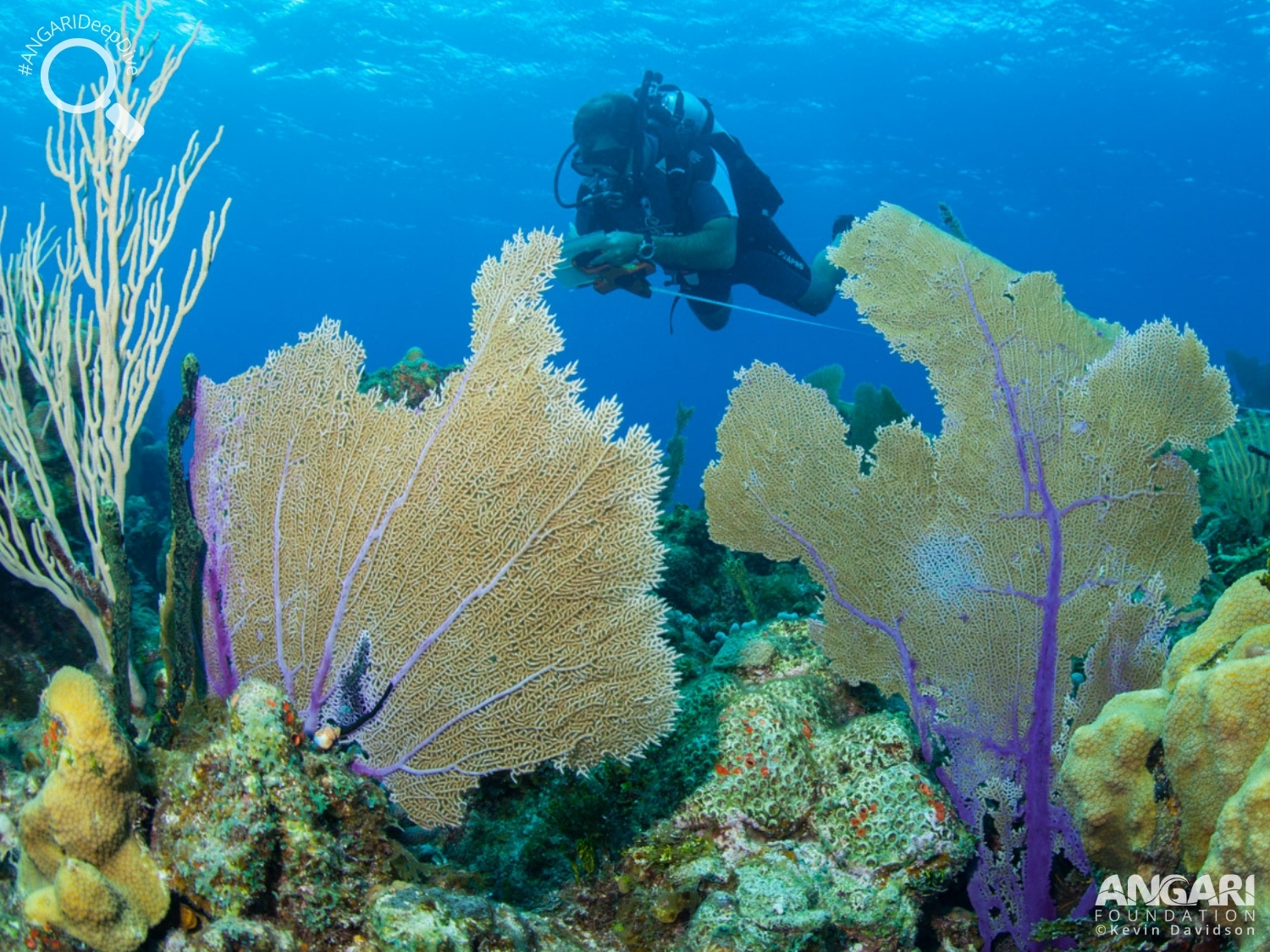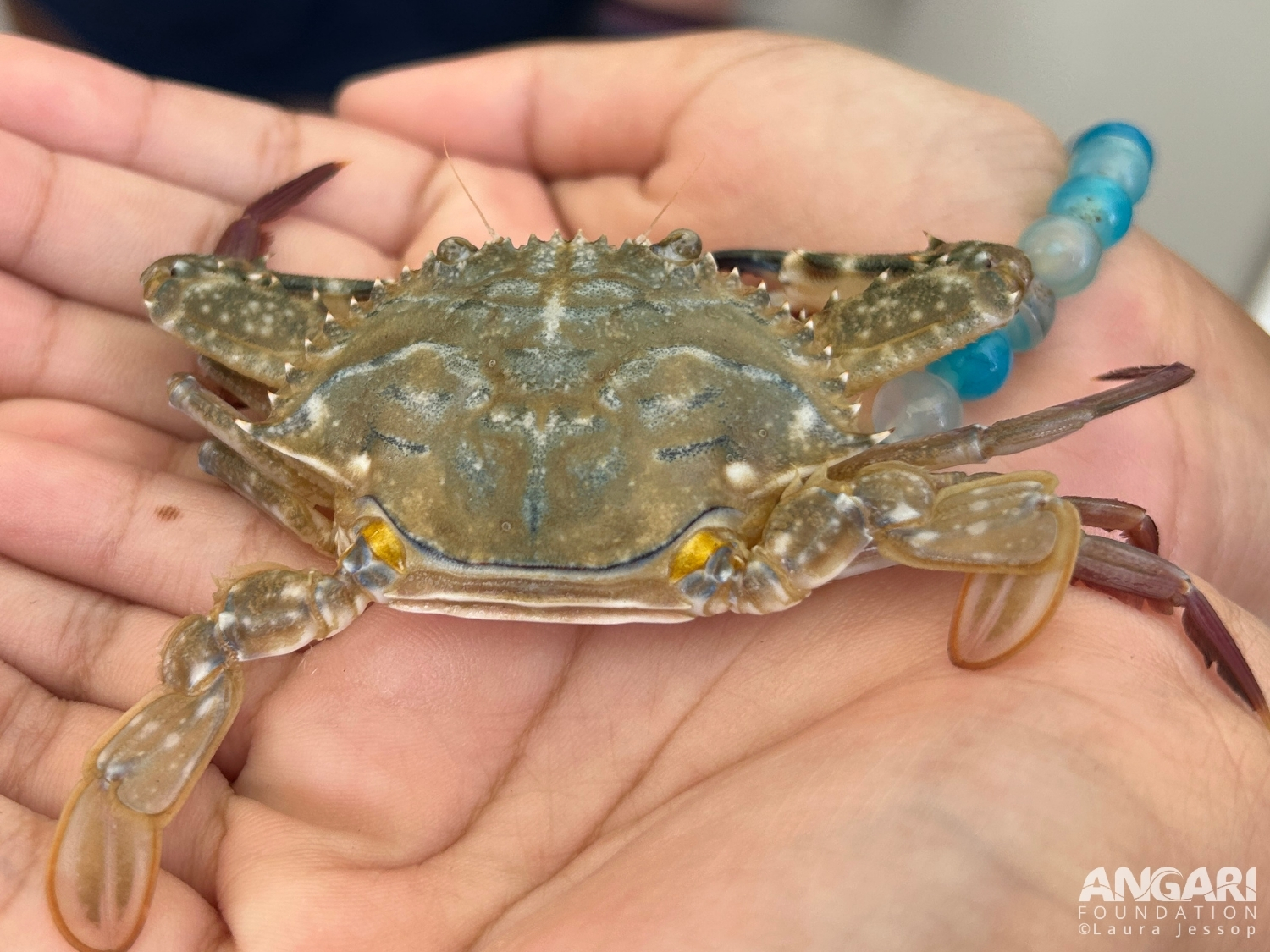Common sea fans are commonly found on coral reefs and can be identified by their purple tissue.

Green Moray Eel (Gymnothorax funebris)
The green moray eel (Gymnothorax funebris), and over 800 other species of eels, belong to the order Anguilliformes. Members are characterized by elongated bodies, wave-like swimming motion, fused dorsal, caudal & anal fins and a lack of pelvic fins.
Here are a few fascinating facts about the green moray eel.
#1: Where does the green moray eel live?
Green moray eels are found in the western Atlantic Ocean living in a variety of habitats including coral reefs, rocky tidal areas, mangroves and sandy bottoms. They are a fairly common species to see while snorkeling or diving so keep your eyes peeled!
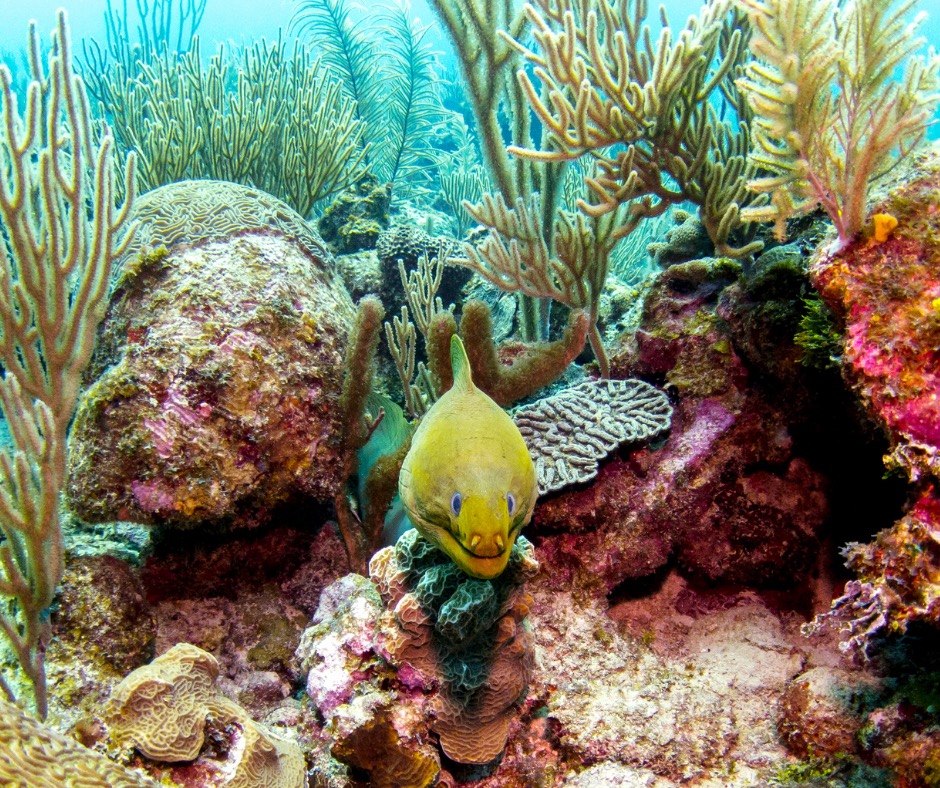
#2: Why are they named green moray eels?
The green moray eel isn’t really green. It is actually brown, but it has a layer of yellow mucus covering its whole body, which gives it that green color. This mucus protects the eel from things like parasites and bacteria.
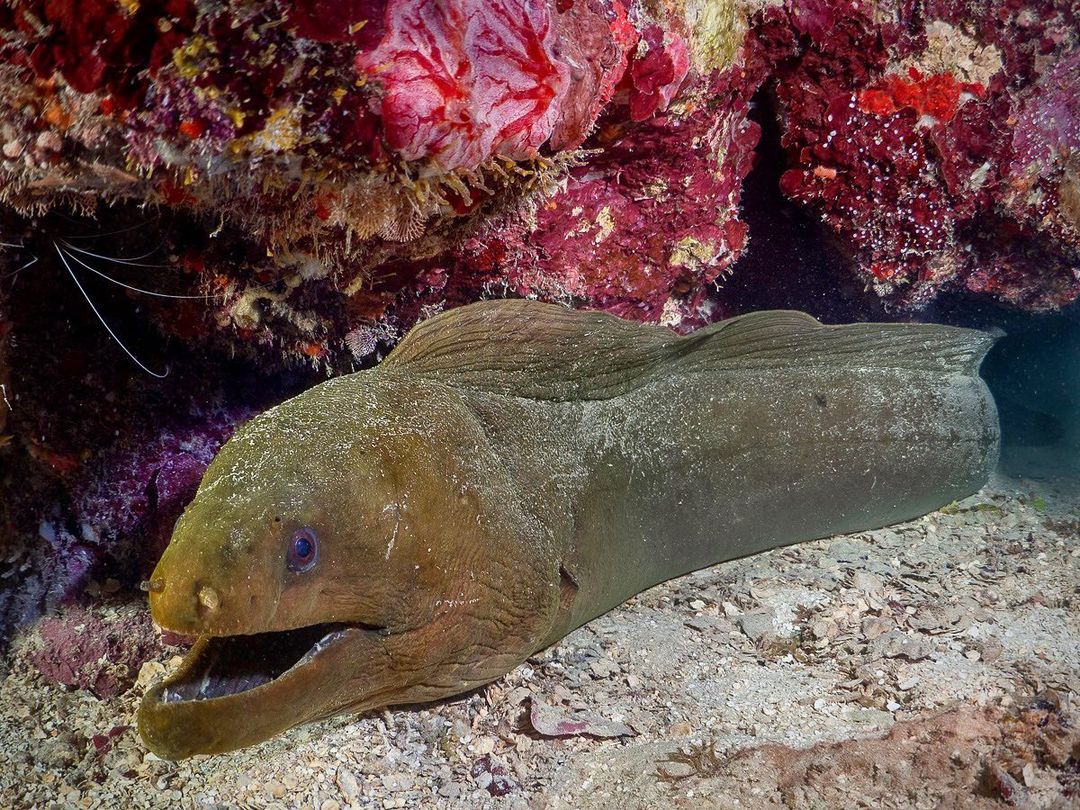
#3: How do green moray eels breathe?
The reason why green moray eels are continually opening and closing their mouths isn’t a display of threatening behavior, but instead it’s how they breathe. This action consistently flushes oxygen-rich water over their gills.

#4: Green moray eels have a strong sense of smell.
Green morays are not known for having very good eyesight. However, they make up for this with a strong sense of smell, which helps them hunt at night. Two distinct nostrils on the end of their snout are used to seek out prey like fish, crustaceans and cephalopods, as well as locate spawning sites.
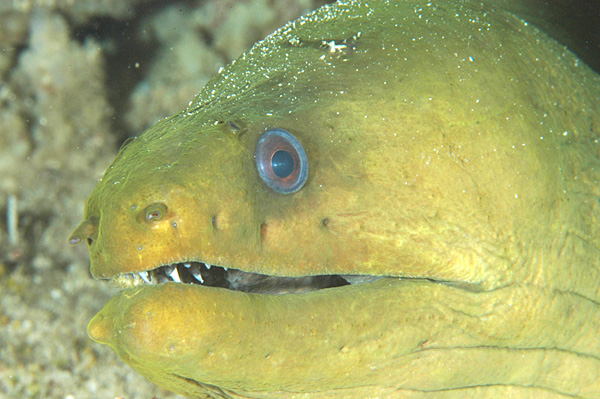
#5: Green moray eels exhibit predation strategies.
Green morays are ambush predators that will prey on any fish, crustacean or cephalopod. If prey is too large to consume whole, the eel will wrap itself around their prey in a knot and tear it into smaller pieces. As a top predator, it benefits from having few predators of its own. Eels also take part in something called nuclear hunting, in which they team up with coral grouper to flush out prey into the open to catch it.
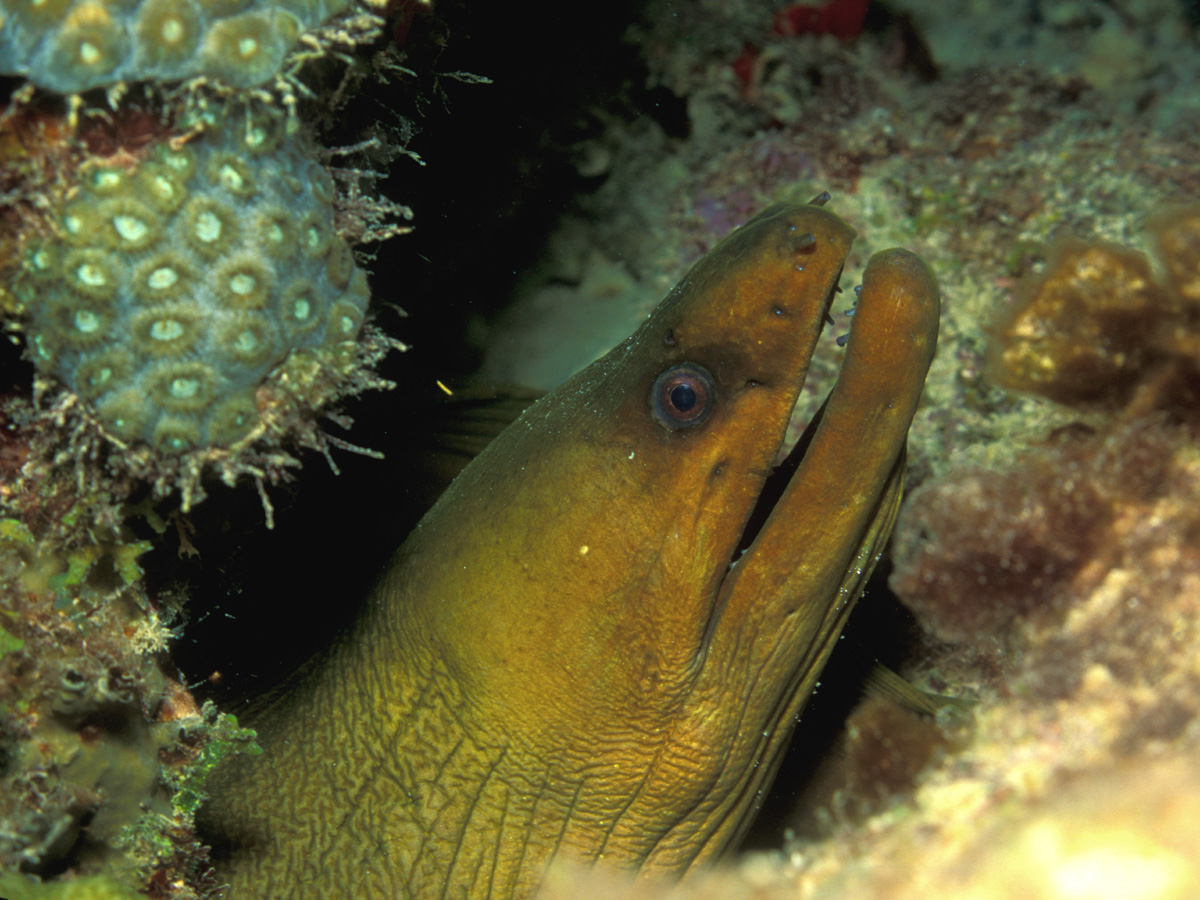
#6: Unique adaptations of the green moray eel
The green moray eel has an incredibly clever adaptation it uses to survive. Green morays have two sets of jaws, one in their mouths and a second set in their throats, which is used to move eaten prey down into their esophagus. This is called the pharyngeal jaw, and without it they could not be as fierce of a predator as they are!
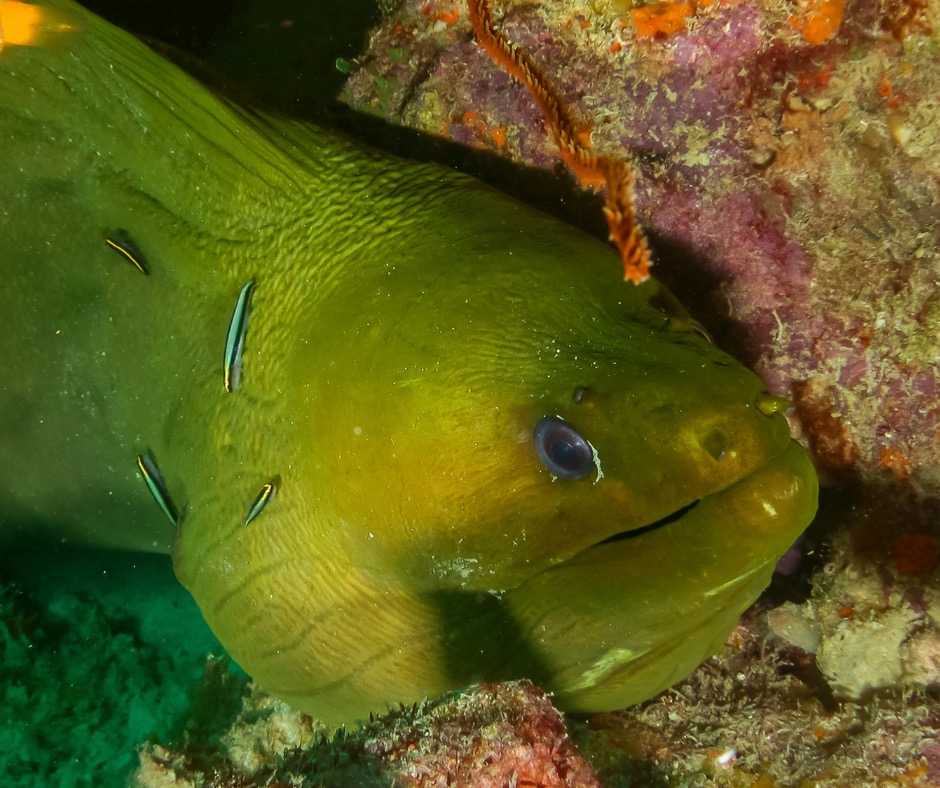
#7: The green moray eel is a solitary species.
Moray eels are mostly nocturnal, solitary animals, which leave their hiding places at night to hunt. While diving or snorkeling, you might see one resting in cracks and crevices of the reef during the day. Occasionally you may be lucky enough to see one swimming in the open and can appreciate just how large they can get – up to 8 feet long!
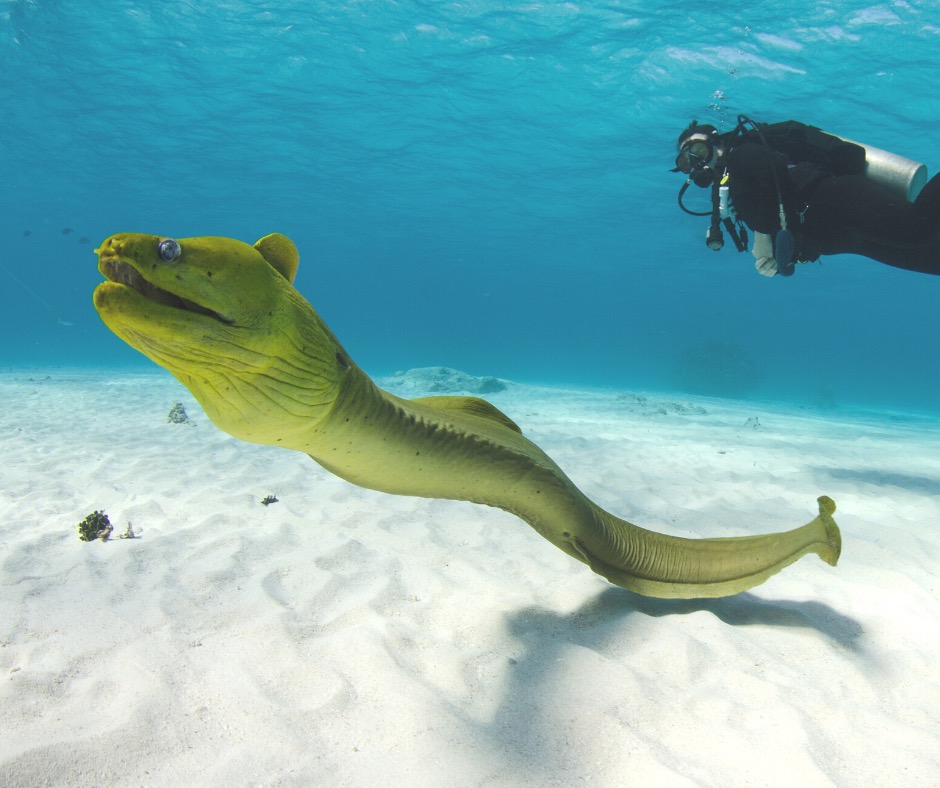
#8: Green moray eels are absentee parents.
Green moray eels definitely aren’t the best parents. The female will lay eggs in a spawning site, and then the males will come along and fertilize them. After fertilization the parent eels have no further involvement. The fertilized eggs are left to develop alone and unprotected, floating on top of the water until they hatch into larvae. The larvae will float with the plankton for several months while they develop into young adult eels. It’s every eel for itself!

Green moray eels are normally calm and curious. However, they can be very territorial and you may get bitten if you put them on the defensive or accidentally put your hand in their cave. Although not a species currently threatened, they still face habitat challenges due to them making their homes in coral reefs, an ecosystem under pressure. With climate change, ocean acidification and other threats to coral reefs growing, habitat loss and a reduction in food availability for the green moray eel is concerning. By taking extra care during diving and respecting the coral reef and animals that live there, we can help keep the moray eel population healthy long term.
Additional Green Moray Eel Resources:
1. Florida Museum of Natural History
2. Australian Museum

